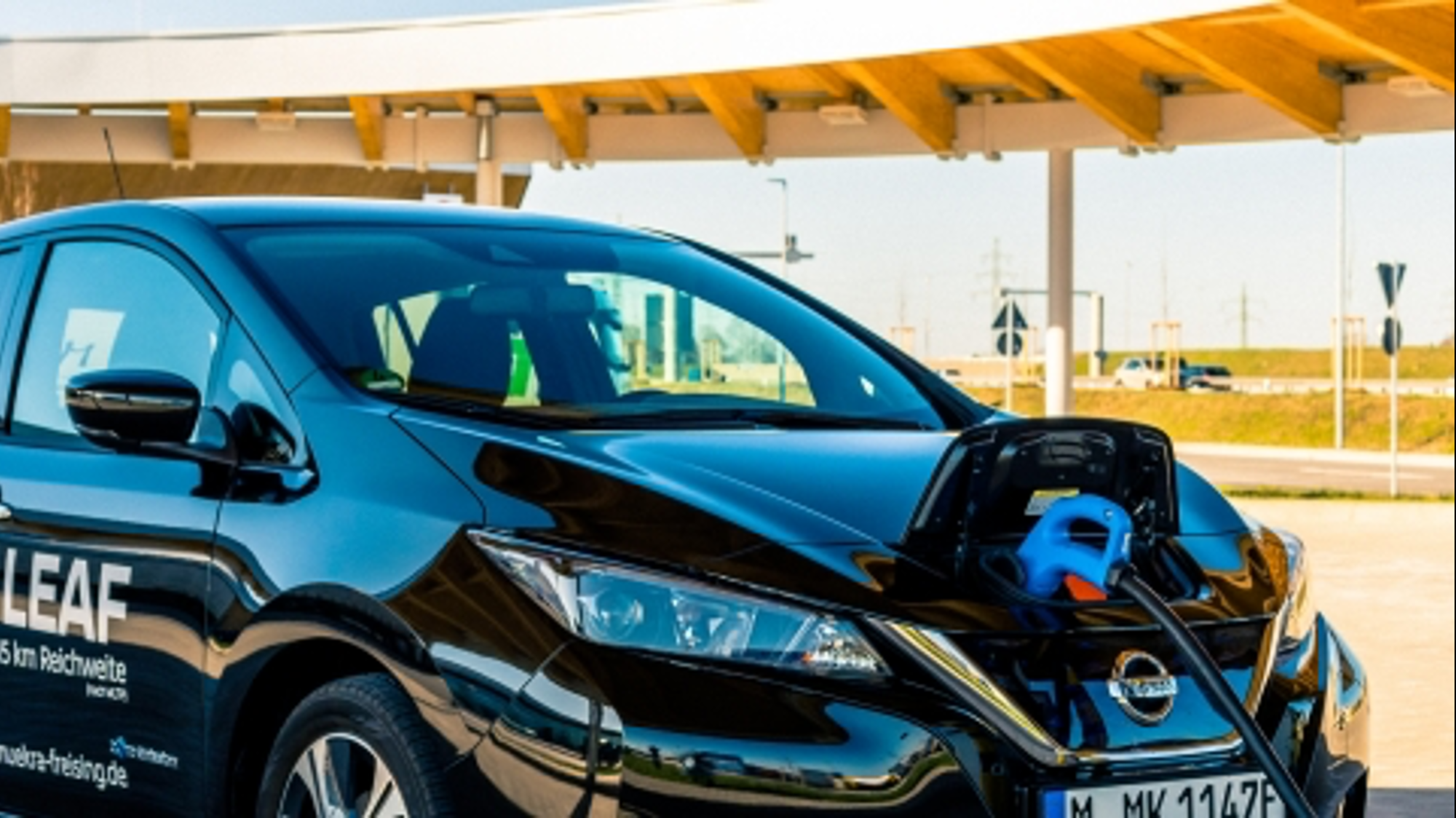
Blog post
Are car charging points today’s equivalent of Levi jeans?
My dear wife recently bought a pair of Levi’s jeans for an eye-watering GBP 75. I say “eye-watering” because she could have bought pretty much the same thing in Tesco for GBP 15, but they wouldn’t be called Levi’s, hence the price difference. Legend has it that Levi Strauss originally made his money selling cheap jeans to Californian gold miners, along with shovels and tents. I suspect both Mr. Strauss and a few of these miners would be quite surprised to see that they have now become a luxury item purchased by Surrey mums. However, my bigger point is that Mr. Strauss was not a gold miner: instead he made lot of money selling things that gold miners needed.
In economics these are known as complementary goods. When we see a bubble developing in a market with low barriers to entry, companies selling complementary goods into that frothy market often do better than the incumbents in the long run. We may now be seeing the same phenomenon in the more prosaic world of electric car charging stations.
Although we use the term bubble, the fundamentals of this market do appear durable – at least for a few years. Because of the carrot (grants) and stick (taxes) of government legislation, all of the big car companies are frantically chasing Tesla’s tail and pouring money into developing electric cars like there is no tomorrow. At the current rate of progress, a good old fashioned petrol engine car will go the way of our gold miner’s horse: something that used to be cheap and commonplace will become the sole preserve of rich aficionados.
VW, having presumably dusted itself down and given its senior management a terse Germanic talking-to after the emissions scandal, is back in the game and is investing billions of euros in electrifying its fleet. And most other car companies are following suit. And of course, all these cars will need some sort of a charger. And of course, a charger is much cheaper to design and build than an electric car, and so the thinking goes: investing in car charging companies is the modern equivalent of selling jeans to gold miners.
Research by the Society of Motor Manufacturers suggests that as many as 130 million chargers are going to be installed worldwide in the next 5 years alone, and 7 million of these will be in the UK. If we assume an average charger costs GBP 1,500 then that’s a global market approaching GBP 200 billion, which is an appealing idea for a lot of infrastructure funds looking for better returns than those available from wind or solar. But there are a few ifs and buts to navigate along the way.
Firstly, there are three, maybe four, different types of charger stations and nobody is quite sure how many of each will be required. The obvious ones are domestic. These are in essence just fancy plugs with big fuses that you wire into the mains of your house and use to top up your car overnight. They deliver a small but steady trickle charge, cost about GBP 1,000 and can be installed by your average common or garden electrician in a couple of hours at most. This is likely to be the biggest market, but it is hard to see a role here for infrastructure funds (as either the householder will buy the charger himself or, more likely, the company will chuck it in for free if you twist the salesman’s arm hard enough). Either way, you don’t need the complex superstructure of project finance just so a sparky can fit you a plug.
Secondly, destination and public chargers that deliver a fast but not rapid charge. These are the things you see at the side of the road and the supermarket or the hospital car park. They cost more than their domestic equivalent because they have to be more robust to withstand the weather, malevolent teenagers, passing dogs and the general wear and tear that comes from putting any sort of technology into a public space. They are also ‘intelligent’ and wifi-enabled so they can tell drivers when they are free for use. This all costs money, so an average public fast charger will cost about GBP 8,000-10,000 installed and will take about an hour to charge up a Nissan Leaf with 22 kWh of electricity, which is equivalent to roughly 80 miles additional range. They are called fast destination chargers because (or so the theory goes) you will do something else at your destination like your shopping or visiting your granny in the hospital whilst they top up your car.
Finally, we have the ’on route’ rapid chargers for people who really are too busy to wait an hour to top up their car and presumably don’t ever need to go shopping or want to visit their elderly relatives in hospital. These bad boys can charge your Tesla from 20% to 80% full in 20 minutes, but this is reflected in the cost and you won’t get much change from a hundred thousand pounds for one of these. You also need one hell of a grid connection to deliver that much power that quickly so you are not going to be fitting one in your garage any time soon.
So there seems to be a need for external finance for at least destination and rapid chargers because they will be beyond the price range of the average Nissan Leaf purchasers. These are assets with a long lifespan so they should be amendable to project finance structures. But, and it’s a big but: the difference to other types of assets is the big snorty elephant in the corner of the room called demand risk. All non-domestic chargers only really make money in a couple of ways: firstly, they may receive a rent from the host who wants to provide a charger to his customers and secondly, the owner of the charger sells electricity to the car driver at a higher rate per kWh than they buy from the grid. So, for example, the car charger owner can buy power at 14p and sell it for, say, 25p for an 11p profit per kWh which gives rise to a small profit every time a car hooks up. For the rapid charger the price per kWh is much higher (really this is just a tax on rich people’s impatience) but the underlying transaction is the same, car charging company buys electricity for X (supply) and sells it to the car owner for Y (demand).
This arbitrage is at the heart of every business case for investing in non-domestic car chargers and herein, I think, lies a problem. Ask any potential buyer of electric cars what is putting them off and most people will say range anxiety (i.e. the car will run out of power before they get to the shops or their granny). Ask any manufacturer and they will say this is a needless fear and the range of electric cars increases all the time. Nissan claim that their little Leaf can now putter along for 170 miles and if you pay a bit more you can extend this to 240 miles. The average car journey in the UK is less than 16 miles and even in a big dusty empty country like Spain it is only 34. So not many people are going to be away from their domestic charger very often, if at all, and to my mind this puts a question mark around how much demand will actually arise for destination or rapid chargers selling expensive electricity.
From an infrastructure investor’s point of view, this avoidable demand risk is the key difference between a petrol and an electric car. If I own a petrol car, I have to buy the energy from the petrol station and, although I may shop around to reduce the price per litre, I cannot buy it directly from the oil companies. If I own an electric car, I can always complete my 16 mile journey and fill it up at home whilst I cheerfully spend my spare time switching my supply between a myriad of electricity companies. Once half-hourly domestic billing is finally introduced in the UK, I can also choose the time I fill up to mirror overnight price curves so suddenly I have a lot less incentive to pay an artificially high price for a destination or rapid charger.
So it remains to be seen whether investing in car charging points will be the jeans and pick axe equivalents of the electric car revolution. Undoubtedly the global vehicle fleet will turn electric eventually and this will require millions of chargers to be installed. However I think the jury is still out on how many of these will be domestic, destination or rapid chargers. Electricity is a completely homogeneous product so persuading the car driver to pay a premium for it when they can get exactly the same electrons out of their plug at home is a tough ask.
Obviously, there will still be a demand for non-domestic chargers and even just a share of a market of 130 million chargers worldwide is a big number in anybody’s language but maybe – just maybe – externally financed chargers will not be quite the next big thing that a lot of investors are hoping. The modern-day descendants of Mr. Strauss make millions selling overpriced blue denim work trousers to Surrey mums even though they can buy the equivalent much cheaper elsewhere. I am not sure you will be able to repeat the same trick with electricity.

